Welcome to the enriching world of home gardening, where the simple act of planting a seed sparks a journey of growth, nourishment, and connection with nature. Whether you’re a seasoned green thumb or a budding enthusiast, this comprehensive guide on how to plant a home garden is designed to empower you on your horticultural adventure.
In a time when the desire for fresh, homegrown produce and the therapeutic benefits of gardening are more pronounced than ever, cultivating your own green space has become a fulfilling endeavor. Join us as we explore the step-by-step process of transforming your living space into a vibrant oasis, teeming with the beauty of flowers, the bounty of vegetables, and the joy of nurturing life from seed to harvest. Let’s dig in and sow the seeds of a flourishing home garden together.
Table of Contents
Embarking on the journey of planting a home garden starts with thoughtful planning. Take a moment to envision the garden of your dreams, where colors, scents, and flavors harmonize to create a haven of tranquility and sustenance. Here’s a step-by-step guide to help you lay the groundwork for your flourishing green space:
1. Planning Your Plant a Home Garden-
Embarking on the journey of planting a home garden starts with thoughtful planning. Take a moment to envision the garden of your dreams, where colors, scents, and flavors harmonize to create a haven of tranquility and sustenance. Here’s a step-by-step guide to help you lay the groundwork for your flourishing green space:
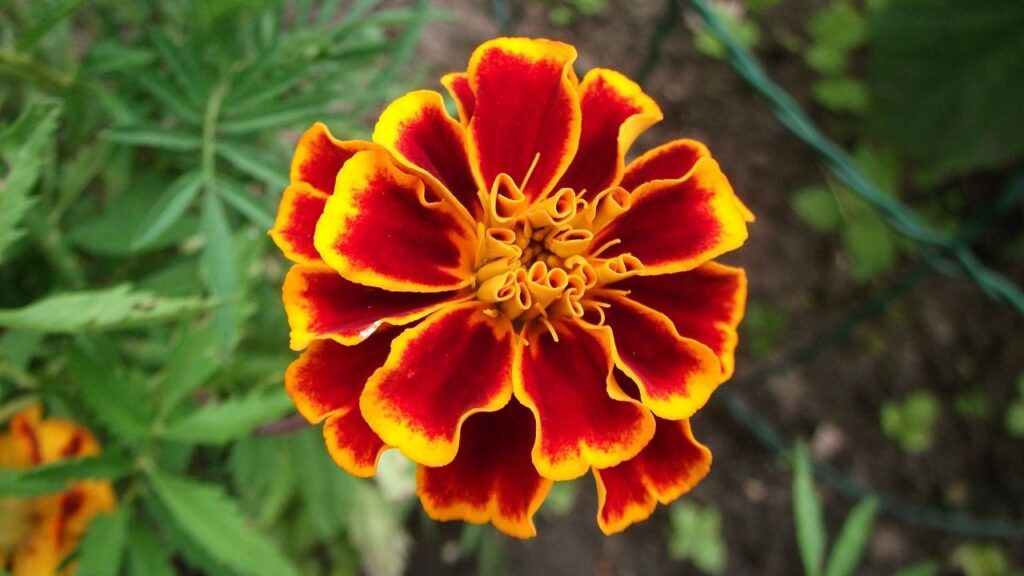
Assess Your Space:
Begin by surveying your available space. Consider factors like sunlight exposure, soil quality, and available area for planting beds or containers. Understanding your space is crucial for selecting the right plants that will thrive in your specific environment.
Create a Garden Plan:
Sketch a simple garden plan, mapping out where you want to place different plants. Consider the aesthetic appeal, potential growth patterns, and the overall design of your garden. This plan will serve as your roadmap for planting and ensure a visually pleasing and well-organized garden.
Select Suitable Plants:
Research and choose plants that are well-suited to your local climate and growing conditions. Take into account the time of year, hardiness zones, and the specific needs of each plant. A diverse selection of flowers, herbs, and vegetables can add both visual interest and practicality to your garden.

Consider Companion Planting:
Explore the concept of companion planting, where certain plants benefit each other when grown together. This not only enhances the health of your garden but also can provide natural pest control and improved yields.
Account for Growth:
Anticipate the growth of your plants. Consider how tall and wide each plant is expected to become and plan for proper spacing to avoid overcrowding. This foresight will contribute to better air circulation and healthier plants.
By investing time in meticulous planning, you’re setting the stage for a thriving and visually appealing home garden. As you move forward, this foundation will guide your planting decisions and contribute to the overall success and beauty of your green sanctuary. Get ready to witness your garden vision come to life!
2: Choosing the Right Plants
Now that your garden plan is in place, the next crucial step in planting a home garden is selecting the right plants. Choosing the perfect mix of flowers, herbs, and vegetables that complement your space and meet your gardening goals requires thoughtful consideration. Here’s a thorough guide to get you through the procedure:
Understand Your Climate:
Start by researching your local climate and hardiness zone. Different plants thrive in varying temperature ranges and conditions. Select plants that are well-adapted to your region to ensure they flourish throughout the growing season.
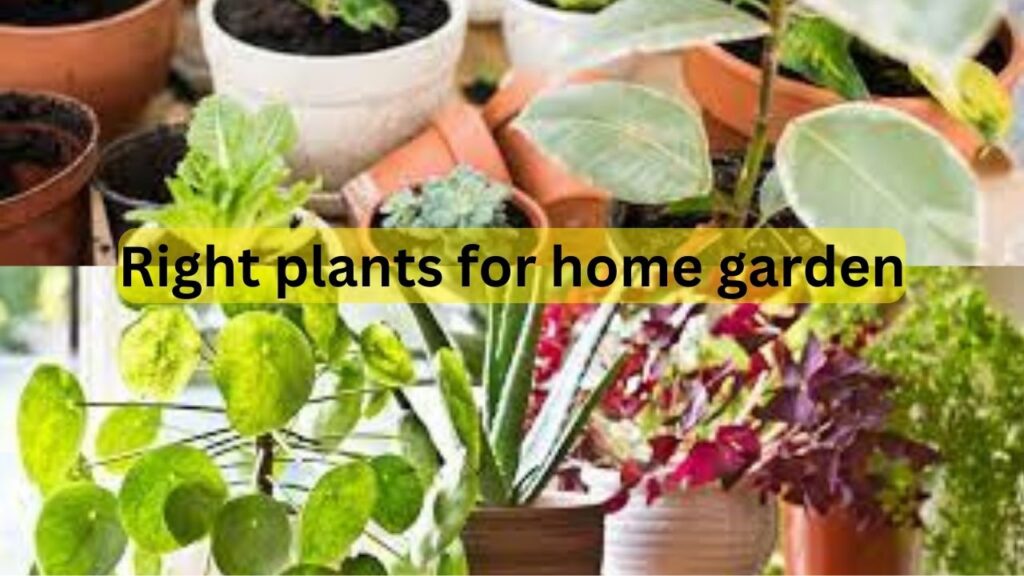
Assess Sunlight Needs:
Observe how the sun shines in your garden. While some plants do better in full sun, others do better in full or partial shade.
Match each plant’s sunlight requirements with the available light in different areas of your garden to optimize their growth.
Consider Soil Conditions:
Evaluate your soil’s fertility, drainage, and pH levels. Certain plants have specific soil preferences, and understanding these requirements will help you choose varieties that will thrive in your garden soil. Adjust the soil as necessary to establish the perfect conditions for growth.
Explore Plant Diversity:
To design a garden that is well-balanced and visually appealing, try to choose a variety of plants. Mix flowers with herbs and vegetables to enhance biodiversity, attract beneficial insects, and create a dynamic landscape that appeals to both aesthetics and functionality.
Think About Seasonal Interest:
Plan for year-round interest by selecting plants that offer blooms, foliage, or harvestable produce during different seasons. This ensures your garden remains visually engaging and productive throughout the year.
Consider Maintenance Requirements:
Be realistic about the time and effort you can commit to garden maintenance. Choose plants that align with your maintenance preferences, whether you prefer low-maintenance perennials or enjoy the hands-on care involved in cultivating annuals.
By thoughtfully selecting plants based on these considerations, you set the stage for a harmonious and thriving garden. Each chosen plant becomes a piece of a living mosaic that contributes to the overall beauty and success of your home garden. As you navigate the nursery or seed catalog, let these considerations guide your choices and bring your garden vision to life.
3: Preparing the Soil
Now that you’ve envisioned your garden and chosen the right plants, the next crucial step in planting a successful home garden is preparing the soil. Healthy soil provides the foundation for robust plant growth, ensuring your garden thrives from the ground up. Here’s a guide on how to assess, amend, and prepare your soil for a flourishing garden:
Soil Assessment:
Begin by understanding your soil’s composition. Test for fertility, drainage, and pH levels to identify any deficiencies or imbalances. This information guides you in selecting the appropriate amendments to create an optimal growing environment.
Amendments for Fertility:
Enhance soil fertility by incorporating organic matter such as compost or well-rotted manure. These amendments enrich the soil with essential nutrients, promoting healthy plant growth and improving the overall structure of the soil.
Adjusting pH Levels:
Some plants thrive in acidic soil, while others prefer alkaline conditions. Adjust the soil’s pH level accordingly using lime or sulfur to meet the specific needs of the plants you’ve selected for your garden.
Enhancing Drainage:
Ensure proper drainage by incorporating organic matter into heavy or clayey soils. This improves soil structure, preventing waterlogged conditions that can be detrimental to plant roots.
Creating Raised Beds:
if your soil is poor or compacted, consider creating raised beds filled with a high-quality potting mix. This allows you to have better control over the soil conditions and provides an ideal growing environment for your plants.
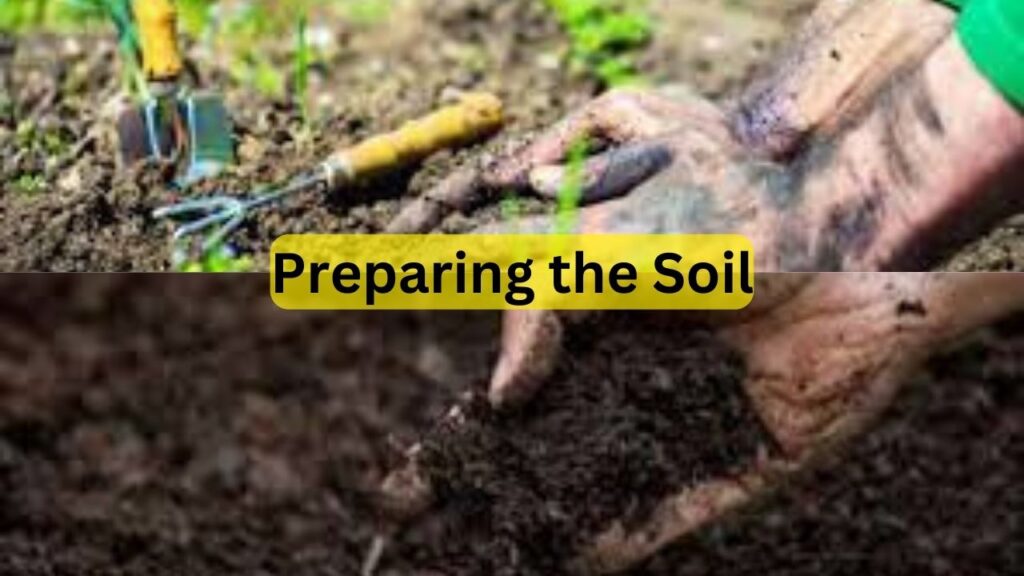
Mulching:
Apply a layer of organic mulch, such as straw or wood chips, to help regulate soil temperature, retain moisture, and suppress weeds. Mulching also contributes to improved soil structure over time as it breaks down.
By investing time and effort in preparing your soil, you lay the groundwork for a thriving garden that rewards you with lush, healthy plants. The soil preparation process is a fundamental step in ensuring your garden’s success and longevity. As you nurture your garden, the enriched soil becomes a nurturing medium for your plants, fostering a vibrant and sustainable ecosystem in your backyard.
4. Planting Techniques
With your garden plan in hand and the soil prepped to perfection, it’s time to dive into the exciting phase of planting. Proper planting techniques are paramount to ensuring your carefully chosen plants establish strong roots and thrive in their new home. Here’s a step-by-step guide to guide you through the planting process:
Sowing Seeds:
If you’re starting from seeds, follow the recommended planting depths and spacing outlined on seed packets. Ensure your seeds have proper contact with the soil and cover them with a thin layer of soil or compost.
Transplanting Seedlings:
For transplants, dig holes that are slightly wider and deeper than the root ball of the seedling. Gently remove the plant from its container, tease out any circling roots, and place it in the hole at the same depth it was in the container.
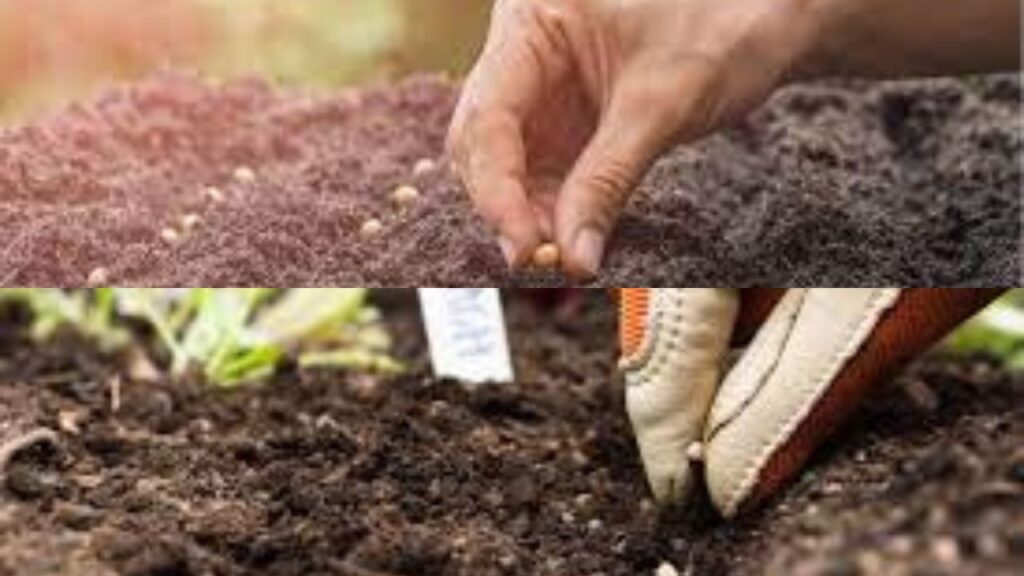
Proper Spacing:
Pay attention to the recommended spacing between plants to prevent overcrowding. Proper spacing allows for adequate air circulation, reducing the risk of diseases, and ensures each plant has sufficient space to grow.
Watering After Planting:
Immediately after planting, water your newly planted seeds or transplants thoroughly. This helps settle the soil, eliminates air pockets, and ensures the roots make good contact with the soil.
Support Structures:
For plants that require support, such as tomatoes or climbing flowers, install stakes, cages, or trellises at the time of planting. This prevents damage to the roots or foliage later in the growing season.
Mulching Around Plants:
Apply a layer of mulch around your plants, leaving a gap around the stem. Mulch helps retain soil moisture, suppress weeds, and regulate soil temperature, creating a favorable environment for plant growth.
Labeling:
To avoid confusion, label your plants with tags or markers. This is especially important if you’ve planted a variety of species or if you’re experimenting with different cultivars.
By mastering these planting techniques, you set the stage for a successful growing season. Properly planted seeds or transplants are more likely to be established quickly, reducing transplant shock and leading to healthier, more productive plants. As you witness your garden coming to life, take pride in knowing that your meticulous planting efforts are the foundation for a thriving and beautiful landscape.
5. Watering and Irrigation
Watering is the lifeblood of your garden, and understanding how to provide your plants with the right amount of moisture is essential for their health and productivity. Proper watering and irrigation techniques ensure that your garden thrives and your plants reach their full potential. Here’s a guide on how to effectively manage watering in your home garden:
Consistent Watering Schedule:
Establish a consistent watering schedule to provide your plants with a reliable water supply. Morning watering is often recommended, allowing foliage to dry during the day and minimizing the risk of diseases.
Deep Watering:
Water deeply rather than frequently. Plants that are encouraged to grow deep root systems are better able to withstand drought conditions.
Aim for at least one inch of water per week, adjusting based on your local climate and soil conditions.
Use Mulch:
Apply a layer of organic mulch around your plants to help retain soil moisture. Mulch acts as a barrier, reducing evaporation, suppressing weeds, and regulating soil temperature.
Drip Irrigation Systems:
Consider installing a drip irrigation system for efficient and targeted watering. Drip systems deliver water directly to the base of each plant, minimizing water wastage and keeping foliage dry, which reduces the risk of fungal diseases.
Avoid Overhead Watering:
Limit overhead watering, especially in the evening, as it can contribute to fungal issues. Watering in the morning allows the foliage to dry during the day, reducing the chances of diseases taking hold.
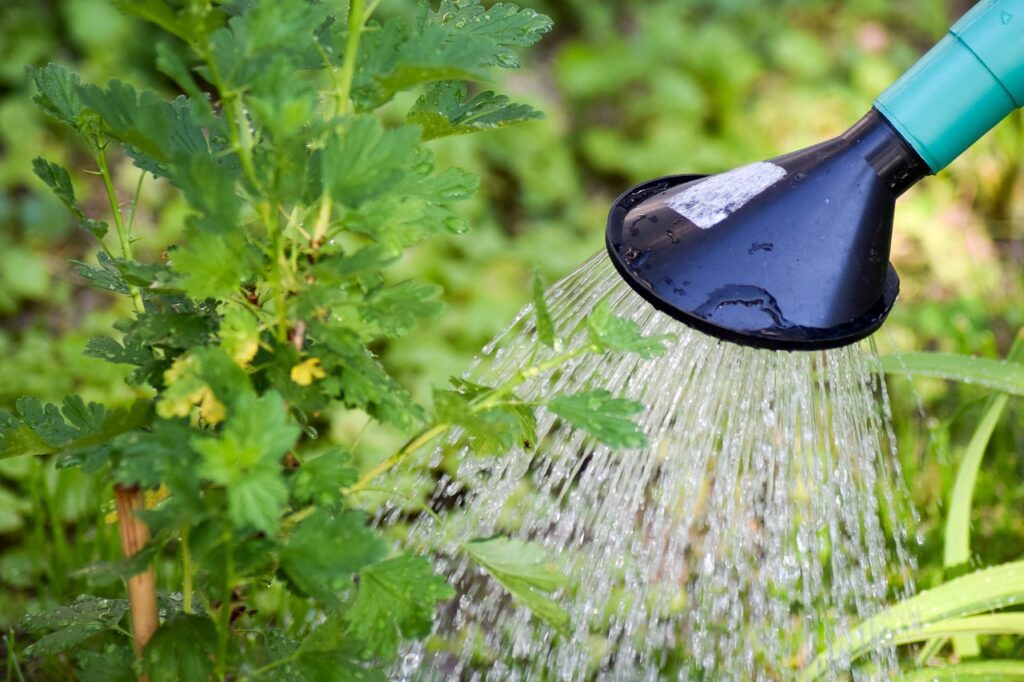
Monitor Soil Moisture:
Regularly check the soil moisture levels by inserting your finger into the soil.
Adjust your watering schedule based on weather conditions, taking into account rainfall and humidity.
Watering Newly Planted Seedlings:
Newly planted seedlings require extra care. Provide them with consistent moisture until they establish robust root systems. A gentle, consistent trickle of water helps prevent soil erosion around fragile roots.
By mastering the art of watering and irrigation, you empower your plants to thrive, bloom, and bear fruit. Understanding the specific water needs of each plant and tailoring your watering practices to your garden’s unique conditions contributes to a healthy, vibrant, and sustainable garden ecosystem. As you nurture your garden with the right amount of water, you’ll witness the beauty of nature flourishing under your care.
6. Mulching for Success
Mulching is a gardening technique that not only adds aesthetic appeal to your garden but also plays a crucial role in its overall health. As you embark on the journey of planting your home garden, incorporating mulch is a simple yet powerful step toward success. Here’s how mulching can enhance your gardening experience:
Moisture Retention:
Mulch acts as a natural insulator, preventing rapid evaporation of soil moisture. This helps maintain consistent soil moisture levels, reducing the frequency of watering and ensuring your plants stay hydrated.
Weed Suppression:
A layer of mulch creates a barrier that inhibits weed growth by blocking sunlight and preventing weed seeds from germinating. This not only keeps your garden looking tidy but also minimizes competition for nutrients.
Temperature Regulation:
Mulch acts as a buffer against temperature extremes, regulating soil temperature by keeping it cooler in the summer and warmer in the winter.
Soil Structure Improvement:
As organic mulch breaks down over time, it contributes organic matter to the soil, enhancing its structure and fertility. This promotes a healthy soil ecosystem, supporting the growth of beneficial microorganisms.

Preventing Soil Erosion:
Mulch helps protect the soil from erosion caused by wind and water. This is particularly beneficial on slopes or in areas with heavy rainfall, where erosion can be a concern.
Enhancing Aesthetic Appeal:
Beyond its practical benefits, mulch adds a finishing touch to your garden’s visual appeal. Choose from a variety of materials such as wood chips, straw, or shredded leaves to complement your garden’s design.
Incorporating mulch into your gardening routine is a simple yet effective strategy for success. As you spread a layer of mulch around your plants, you’re not only providing them with a host of benefits but also creating a visually stunning and well-maintained garden space. So, mulch away and watch your garden flourish in response to this small, but impactful, addition.
7. Fertilizing Your Garden
Fertilizing is the nutritional boost that propels your garden from good to great. Just like humans need a balanced diet, plants crave essential nutrients for optimal growth and productivity. Here’s a guide on how to nourish your garden with the right fertilization techniques:
Understand Plant Nutrients:
Familiarize yourself with the primary nutrients plants need: nitrogen, phosphorus, and potassium (N-P-K). Different plants have varying nutrient requirements at different growth stages, so choose a fertilizer that aligns with your garden’s needs.
Selecting the Right Fertilizer:
Whether organic or synthetic, choose a fertilizer that suits your gardening philosophy. Organic options enrich the soil with natural elements, fostering long-term soil health, while synthetic fertilizers provide a quick nutrient boost.
Application Timing:
Apply fertilizers at the right time to maximize their impact. Typically, a balanced fertilizer can be applied in early spring as plants emerge from dormancy. For flowering and fruiting plants, a second application during the growing season may be beneficial.
Follow Recommended Dosages:
Over-fertilizing can be as detrimental as under-fertilizing. Adhere to recommended dosage instructions on the fertilizer package to prevent nutrient imbalances, burning of plants, or environmental runoff.
Consider Slow-Release Fertilizers:
Opt for slow-release fertilizers for a gradual nutrient release over an extended period. This provides a steady supply of nutrients, reducing the risk of nutrient leaching and ensuring sustained plant growth.
Compost as Natural Fertilizer:
Embrace the power of compost as a natural, nutrient-rich fertilizer. Compost improves soil structure, enhances water retention, and introduces a diverse range of essential nutrients.
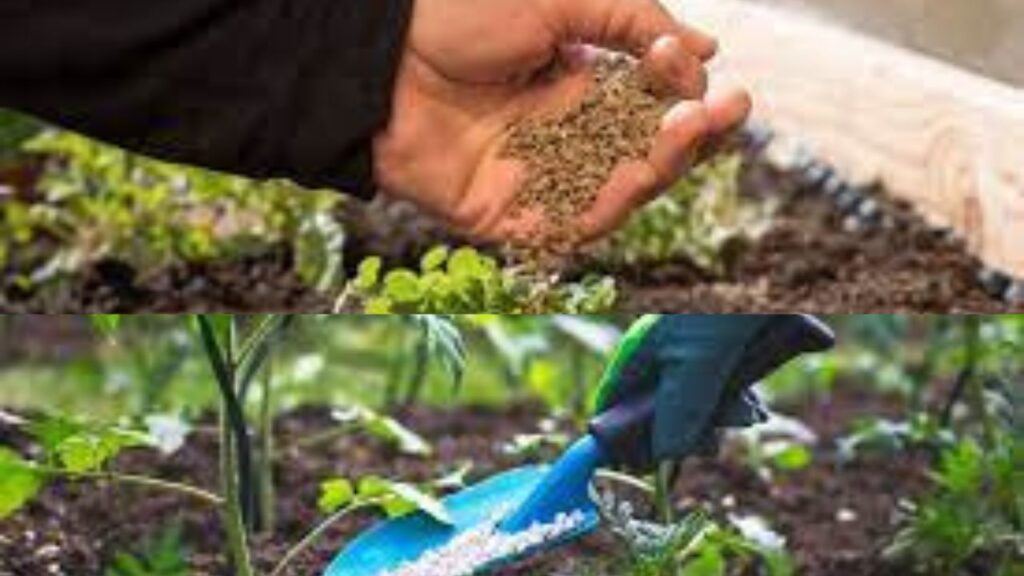
Foliar Feeding:
Supplement your plant’s nutrient intake by foliar feeding, and applying liquid fertilizers directly to the leaves. This method ensures quick absorption and can address nutrient deficiencies effectively.
By mastering the art of fertilizing, you’re empowering your garden to reach its full potential. Nourished plants are more resilient, produce healthier blooms, and yield more bountiful harvests. As you feed your garden the right nutrients, you’re investing in the vitality of your green oasis, creating a space where plants flourish and thrive.
8. Managing Pests and Diseases
In the delicate dance of gardening, pests and diseases can occasionally disrupt the harmony of your green haven. However, with proactive management strategies, you can safeguard your plants and ensure a thriving garden. Here’s a comprehensive guide on how to effectively manage pests and diseases in your home garden:
Identify Common Pests and Diseases:
Arm yourself with knowledge by identifying common garden pests and diseases. Regular inspections enable early detection, a key factor in effective management.
Beneficial Insects:
Encourage the presence of beneficial insects such as ladybugs, lacewings, and predatory beetles. These natural predators feed on common garden pests, acting as a built-in pest control system.
Companion Planting:
Explore the concept of companion planting, strategically placing plants that repel pests or attract beneficial insects near susceptible crops. This natural method helps deter pests without the need for chemical intervention.
Crop Rotation:
Implement crop rotation to disrupt the life cycles of pests and diseases. By moving plant families to different areas each season, you reduce the risk of recurrent infestations.
Neem Oil and Insecticidal Soaps:
Opt for organic solutions like neem oil or insecticidal soaps to combat soft-bodied pests. These options are effective yet gentle on beneficial insects and the environment.
Disease-Resistant Varieties:
Choose plant varieties known for their resistance to common diseases. Many modern cultivars are bred to withstand specific pathogens, providing an added layer of protection.

Pruning and Proper Spacing:
Regular pruning helps improve air circulation, reducing the likelihood of fungal diseases. Proper spacing between plants minimizes the risk of overcrowding, creating an environment less conducive to disease development.
Early Intervention:
Act promptly upon detecting signs of pests or diseases. Remove affected plant parts, quarantine infected plants, and treat them with appropriate measures to prevent the issue from spreading.
By adopting a proactive and holistic approach to pest and disease management, you not only protect your garden but also promote a balanced and resilient ecosystem. Embracing natural solutions and preventive measures ensures that your home garden remains a thriving and vibrant haven for plants to flourish.
9. Garden Maintenance
As your garden matures and blossoms, regular maintenance becomes the key to sustaining its beauty and productivity. Establishing a routine for garden maintenance not only keeps your space visually appealing but also contributes to the overall health of your plants. Here’s a comprehensive guide on how to care for and maintain your home garden:
Weeding:
Get rid of weeds regularly to avoid competition for resources and space. Additionally, weeding lowers the chance of illness and gets rid of pests’ hiding places.
Pruning:
Prune your plants to encourage healthy growth, remove dead or diseased branches, and shape your garden for aesthetic appeal. Pruning also enhances air circulation, reducing the risk of fungal issues.
Deadheading:
Remove spent flowers (deadheading) to encourage continuous blooming and divert energy towards new growth. This practice not only extends the flowering season but also maintains the plant’s vigor.
Staking and Support:
Provide support for tall or heavy plants using stakes, cages, or trellises. This prevents plants from bending or breaking under their weight and promotes a neat appearance.
Mulching Maintenance:
Periodically replenish mulch to maintain its effectiveness in moisture retention, weed suppression, and temperature regulation. This ensures ongoing benefits for your garden.
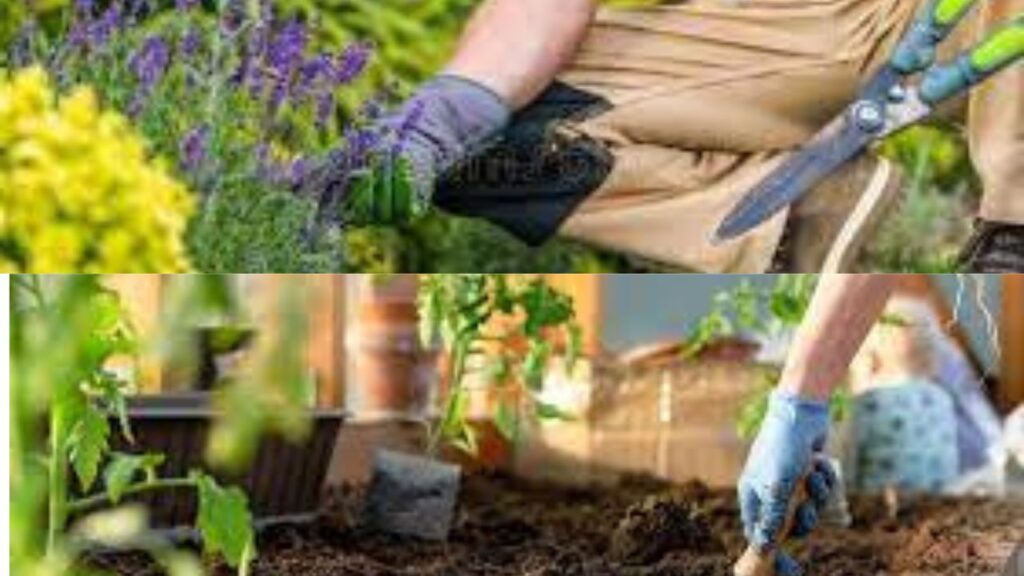
Watering Consistency:
Maintain a consistent watering schedule, adjusting based on seasonal changes and the specific needs of your plants. Adequate watering contributes to overall plant health.
Inspect for Pests and Diseases:
Regularly inspect plants for signs of pests or diseases. Early detection allows for prompt intervention, preventing the spread of issues throughout your garden.
Fertilization Schedule:
Follow a fertilization schedule based on the needs of your plants. Adjust the type and frequency of fertilizers to support growth during different stages of the growing season.
Tool Maintenance:
Keep your gardening tools clean and sharp. Regularly oiling metal parts and cleaning blades ensures they remain effective and minimizes the risk of spreading diseases between plants.
By incorporating these maintenance practices into your gardening routine, you’re not only preserving the visual appeal of your garden but also promoting a healthy and thriving ecosystem. A well-maintained garden becomes a reflection of your care and dedication, rewarding you with a lush and vibrant haven to enjoy throughout the seasons.
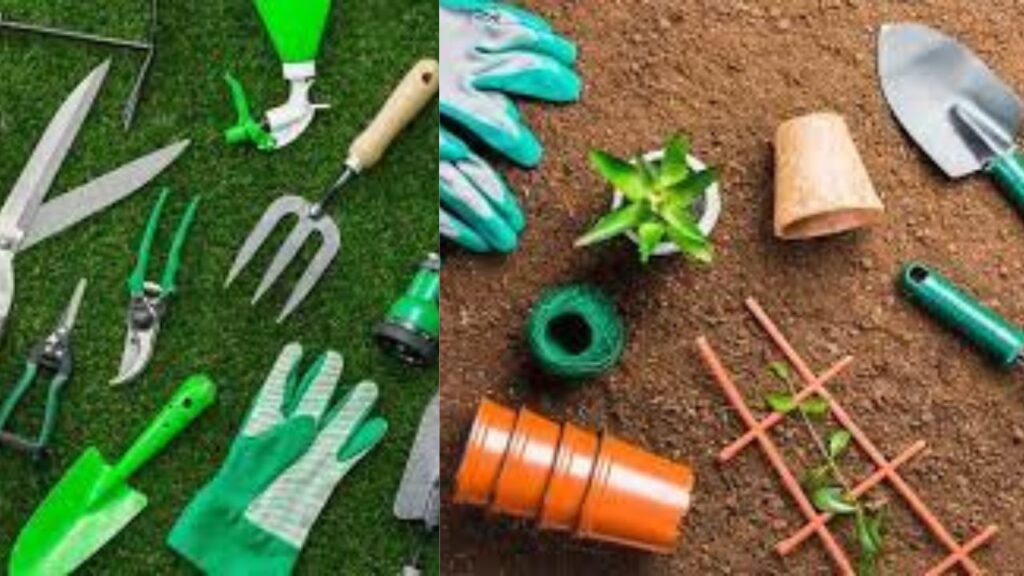
Conclusion
As you embark on your home gardening journey, remember that every seed planted is a step toward a more sustainable, beautiful, and fulfilling life. By following this comprehensive guide, you’ll be equipped with the knowledge and skills needed to create and maintain a thriving home garden. Enjoy the journey of watching your garden grow and flourish under your care. Happy gardening!

